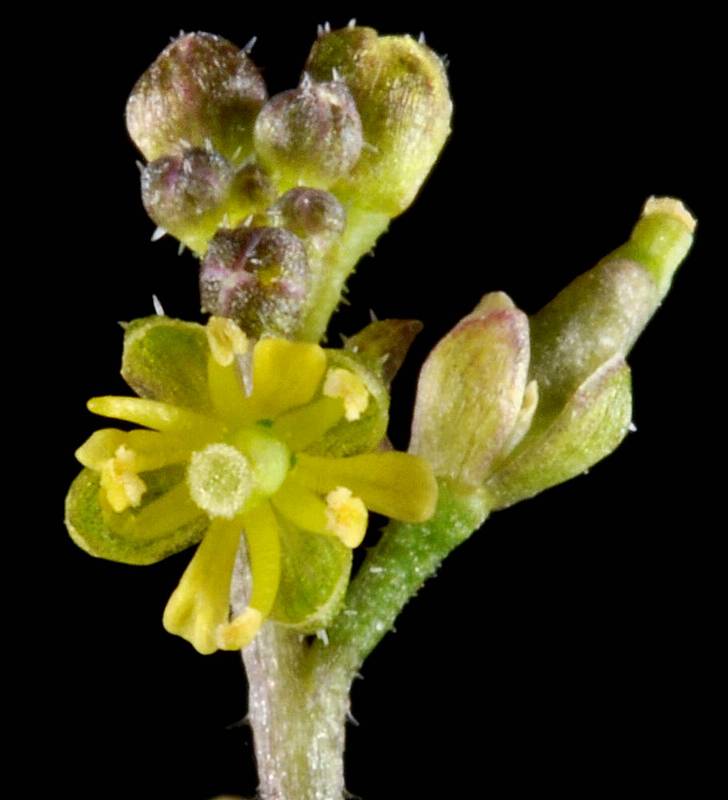Rorippa curvipes
Rorippa palustris
blunt-leaved yellowcress, truncate yellowcress
hispid yellowcress, marsh yellowcress
Leaves alternate, ovate-oblong to oblong-obovate, up to 17 cm. long, all pinnatifid or the upper merely toothed, slightly auriculate.
Inflorescence of bractless racemes; pedicles 4-12 mm. long, equaling the fruits;
sepals 4, about 1.5 mm. long, not saccate at the base, falling off shortly after flowering;
petals 4, light yellow, about 1 mm. long;
stamens 6;
style 0.5-1 mm. long.
Siliques ovate to oblong, spreading to ascending, mostly straight, 3-8 mm. long and 2-3 mm. broad;
seeds in 2 series.
Rorippa curvipes
Rorippa palustris
Occurring chiefly east of the Cascades in Washington; British Columbia to California, east to the Great Plains and Great Lakes region.
Occurring on both sides of the Cascades crest in Washington; Alaska to California, east across North America to the Atlantic Coast; circumboreal.
- Local floras:
BC,
CA,
OR,
WA
- Local Web sites:
CalFlora,
CalPhotos,
Flora NW,
PNW Herbaria
WildflowerSearch
iNaturalist (observations)
USDA Plants Database
- LBJ Wildflower Center
- SEINet
- Plants of the World Online
- Encyclopedia of Life
- Wikipedia
- Google Image Search
- Local floras:
BC,
CA,
OR,
WA
- Local Web sites:
CalFlora,
CalPhotos,
Flora NW,
PNW Herbaria,
Turner Photog.
WildflowerSearch
iNaturalist (observations)
USDA Plants Database
- LBJ Wildflower Center
- SEINet
- Plants of the World Online
- Encyclopedia of Life
- Wikipedia
- Google Image Search



